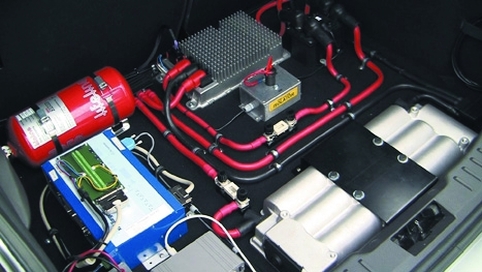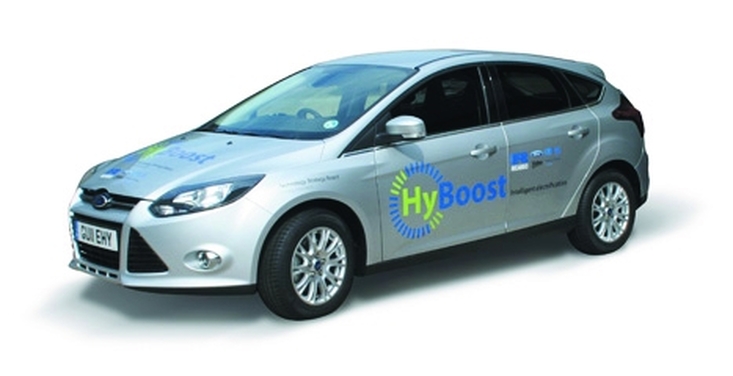Here, I’m thinking of mild hybridization. It will soon be available widely in Europe and could help India would achieve significant reductions in CO2 emissions. The problem is that even at a relatively low cost, say $1,500 per vehicle, mild hybridization may still be too dear for many Indian consumers. The solution? The government should subsidize it. Then it will be up to the automakers and suppliers to tout the fuel-saving benefits of mild hybridization and hopefully create a market for it.
Many suppliers are currently getting ready to launch 48V systems. I talked with Paul Rivera, director of the global product group for hybrids and electrical systems at U.K.-based engineering firm Ricardo Plc. about its mild hybridization system. Called HyBoost, the Ricardo system ties together a handful of fuel-saving technologies, including the two batteries as well as regenerative braking, and a down-sized turbo-charged engine.
 Power for the Hyboost’s system is got from the regenerative braking system
Power for the Hyboost’s system is got from the regenerative braking system
HyBoost works by reducing the engine capacity of a car by 50% - smaller engines that are capable of doing the same amount of work as a larger engine by using efficient methods, such as turbocharging. The engine is combined with a multi hybrid system. The energy lost as heat during breaking are stored into ultra capacitors and this energy is used to give some hybrid functionalities. Like on the drive cycle when you step on the pedal, they can add torque back into the crankshaft.
Basically, they can take the power that was stored in the electric supercharger.
Automakers, like Ford, are working with Ricardo by “downsizing” their engines.
They are essentially studying two Ford engines: a 2.0-liter 4-cylinder with 145 horsepower and a 1.0-liter 3-cylinder with 160 horsepower. Ricardo is adding electrically-powered superchargers to these Ford HyBoost engines to achieve maximum fuel efficiency. In the study using the 2.0-liter engine, the firm was able to achieve approximately 67 mpg! This is compared to 32 mpg without the modifications.
If I’m interpreting the information Rivera sent me correctly, the HyBoost system can produce up to 44 percent better fuel economy on some vehicles. The price, said Ricardo, is about US $1,500 per vehicle.
That is just one example. The German automakers have already started producing cars with 48V systems produced by other suppliers; those models will be on the market soon. The Germans are the ones who first used a 48V system, says David Alexander of research firm Navigant. They wanted something bigger than a 12V in order to smooth out the feel of driving a car with start-stop, he said.
In Europe, the 48V system will first be included on high-end vehicles to both improve the driving feel (not for performance) and to boost fuel economy, he says. It won’t be an offered as option, figures Alexander. “It will just be hidden underneath,” he says. The OEMS will just absorb the cost. At the low-end 48V systems might not have much use in Europe because small, light cars are so fuel efficient, says Alexander. It might be used to add some ability to drive on pure electric power, he says.
That is why the government in India should consider subsidizing mild hybridization, to make it palatable to consumers even on smaller, cheaper vehicles. I’m talking a tax rebate or an outright refund at time of purchase. It would get a lot of people into more fuel efficient and lower-polluting cars. Meanwhile, the government should also be helping with the build out of an electric vehicle charging infrastructure to get India ready for plug-in electric vehicles.

